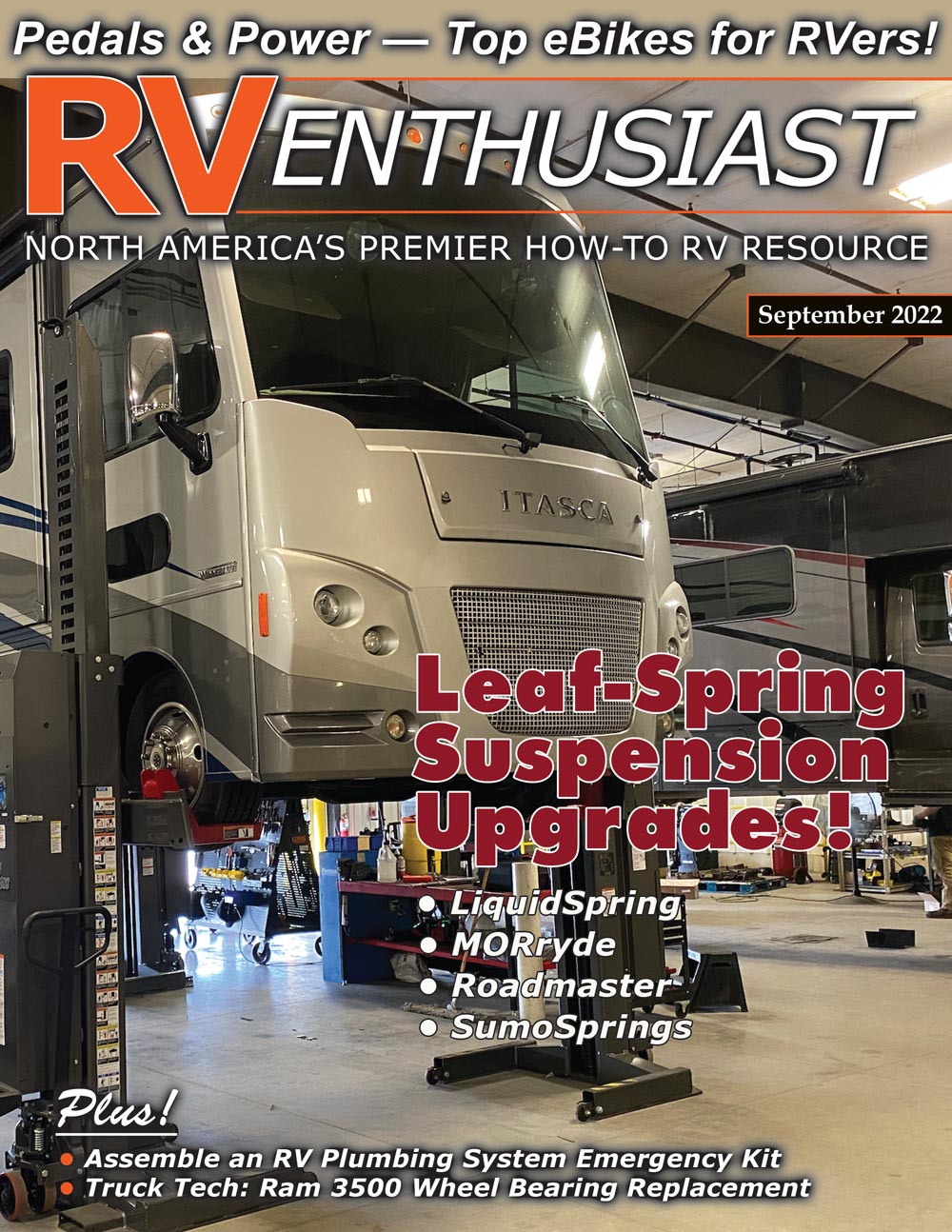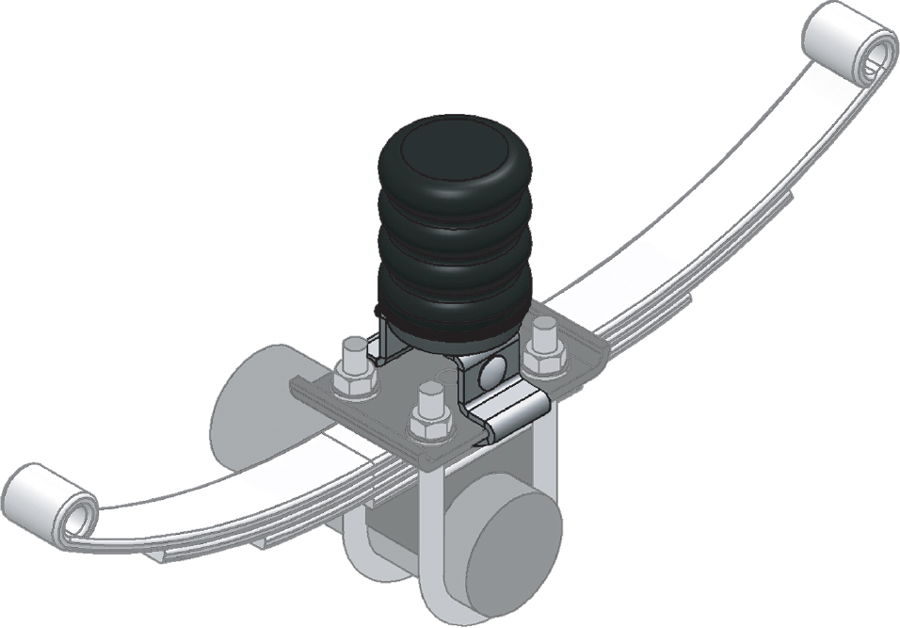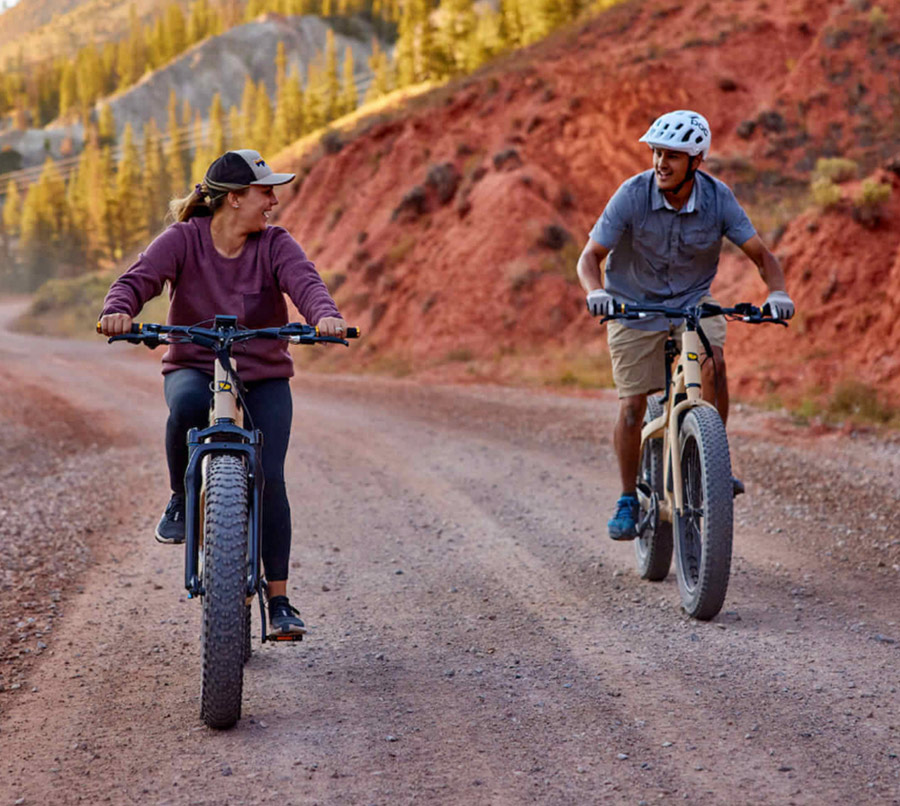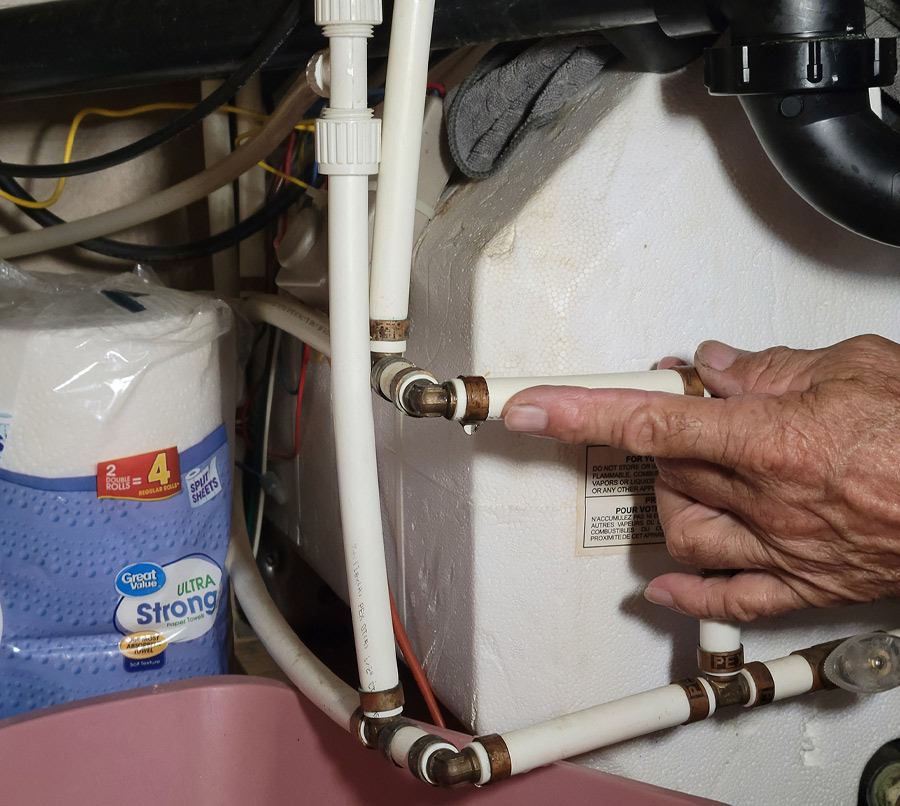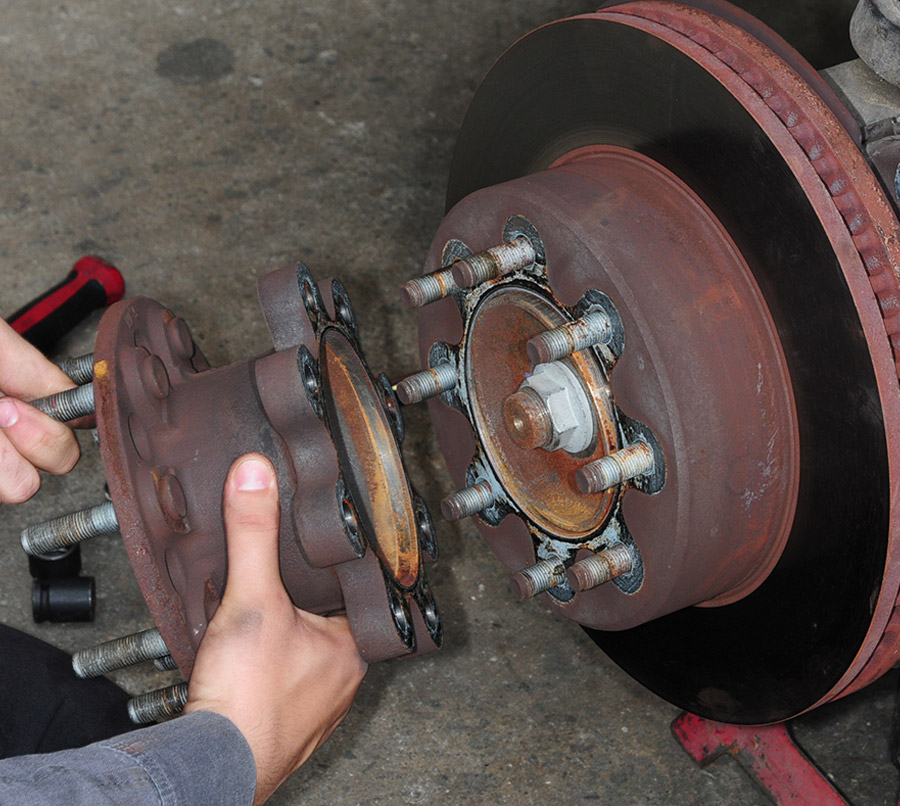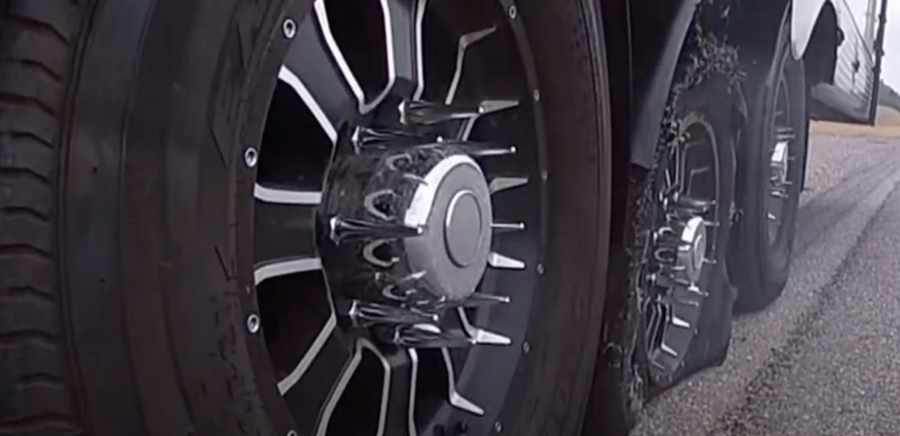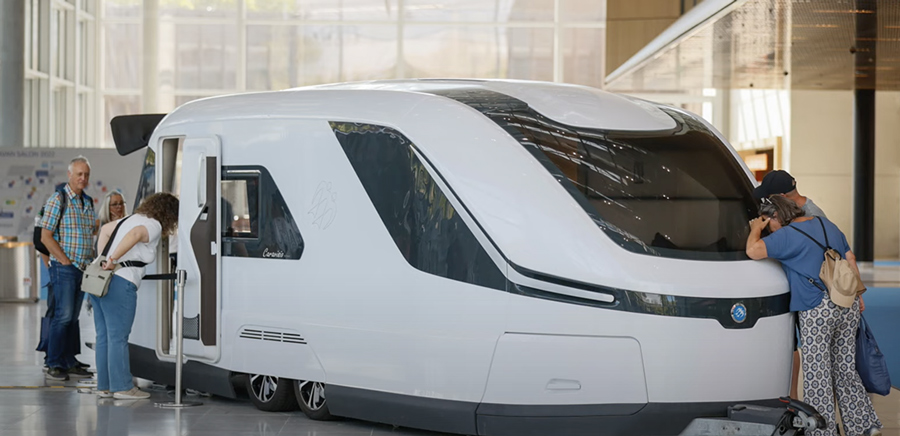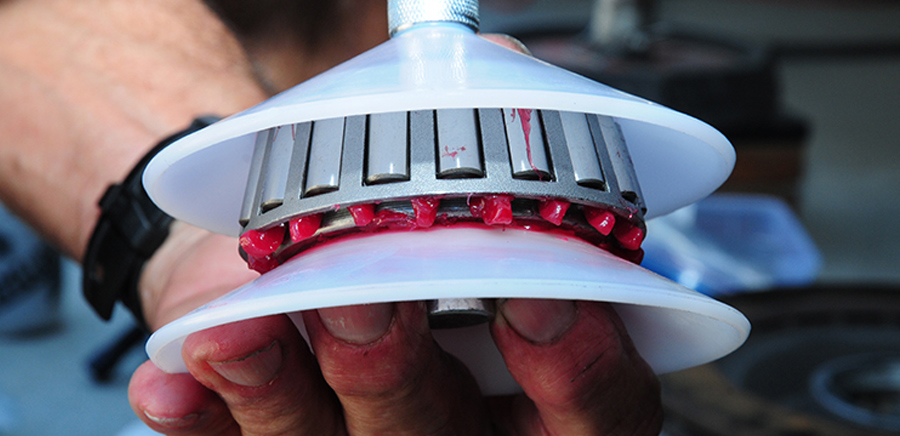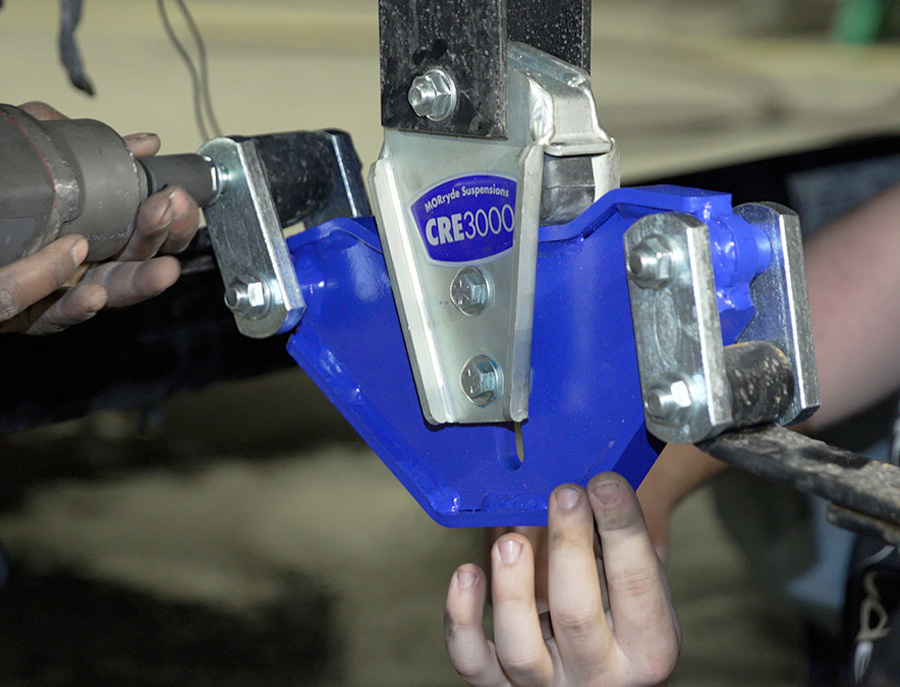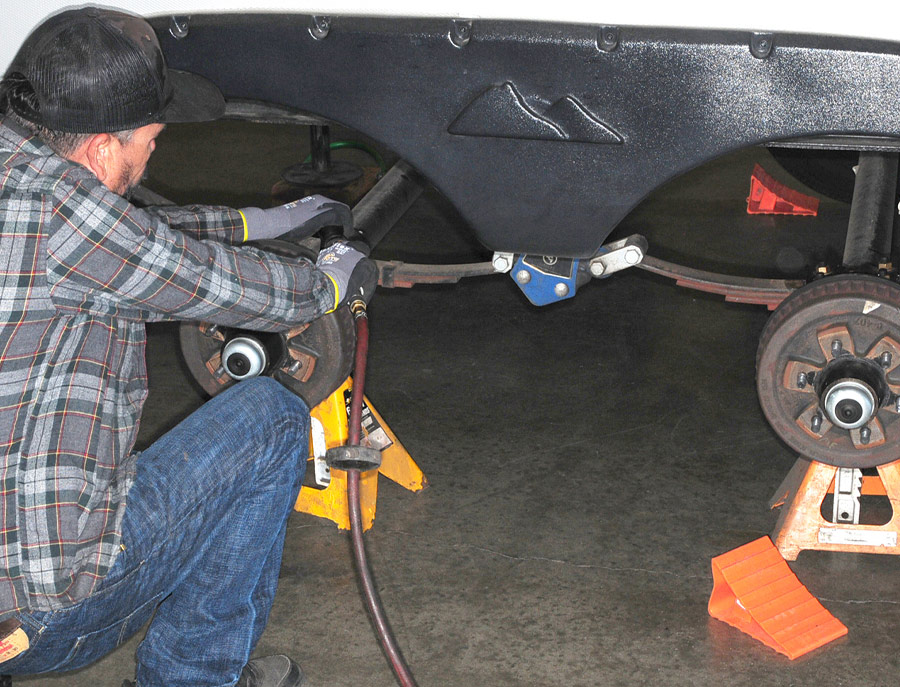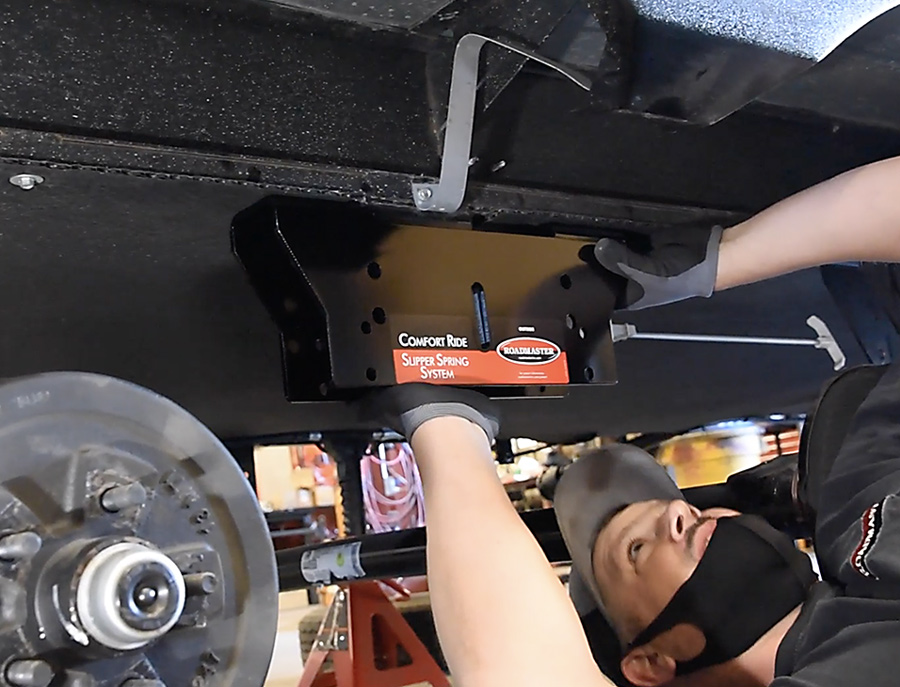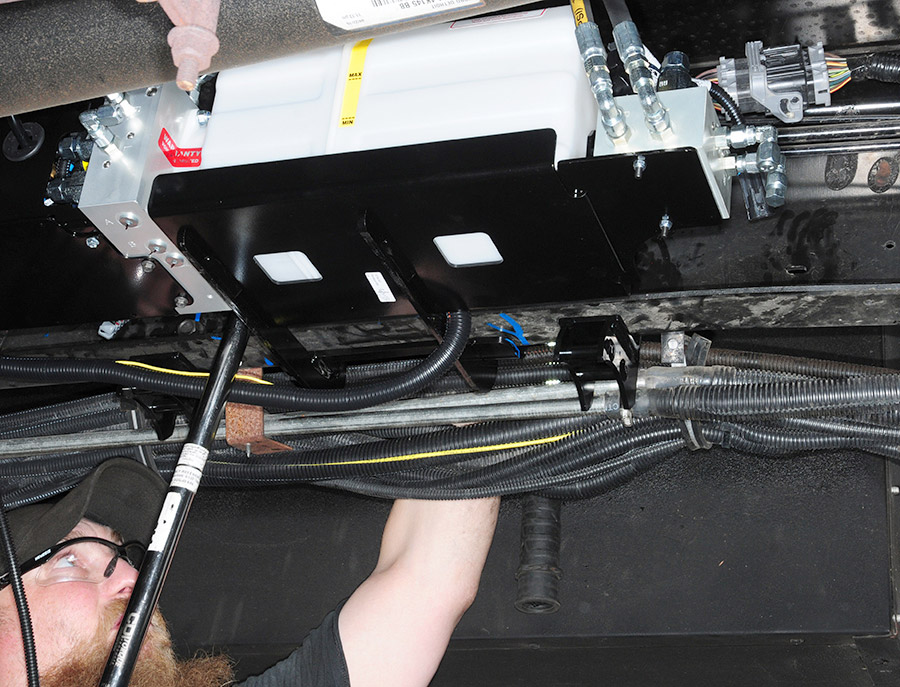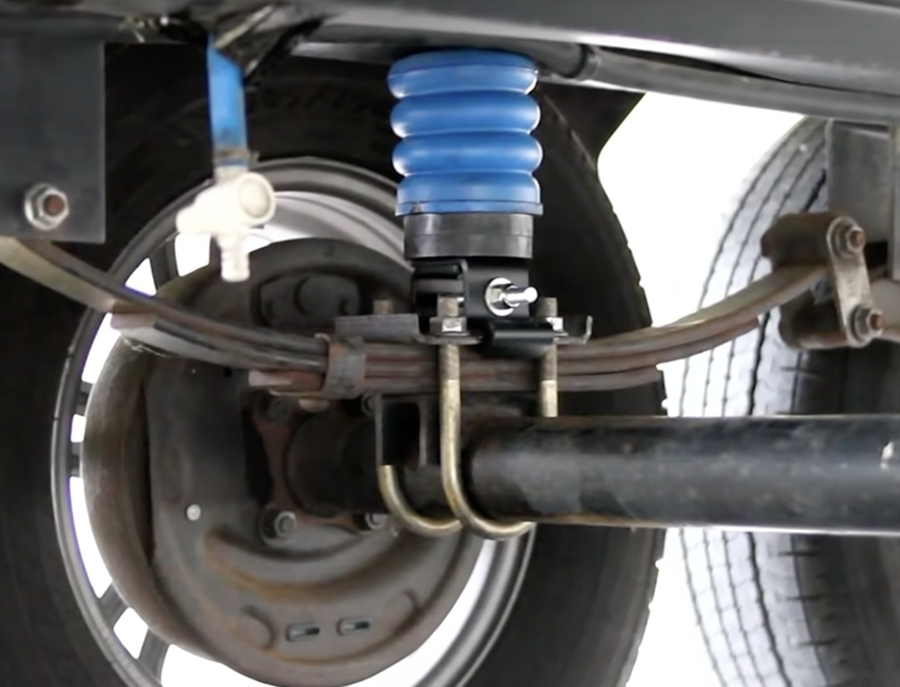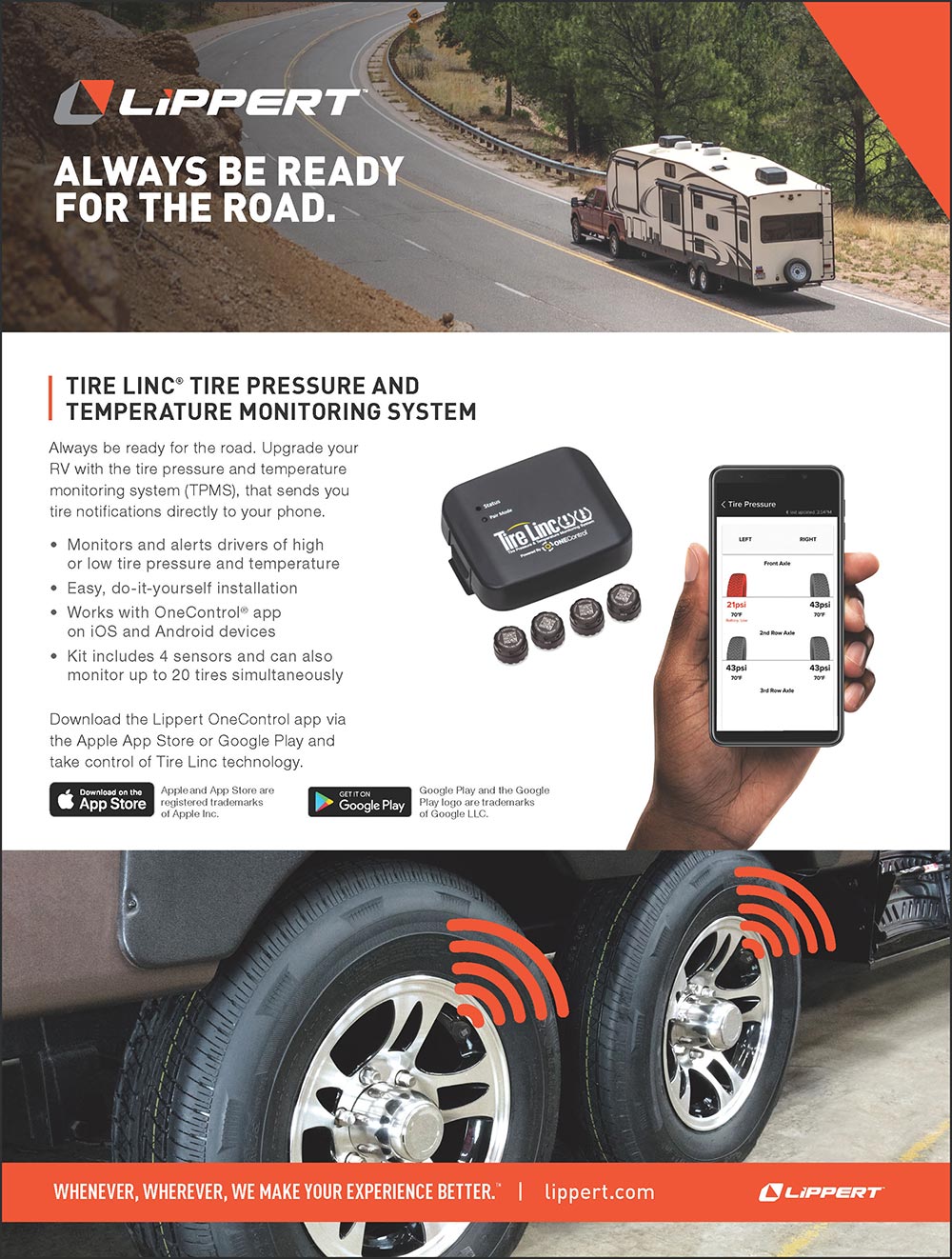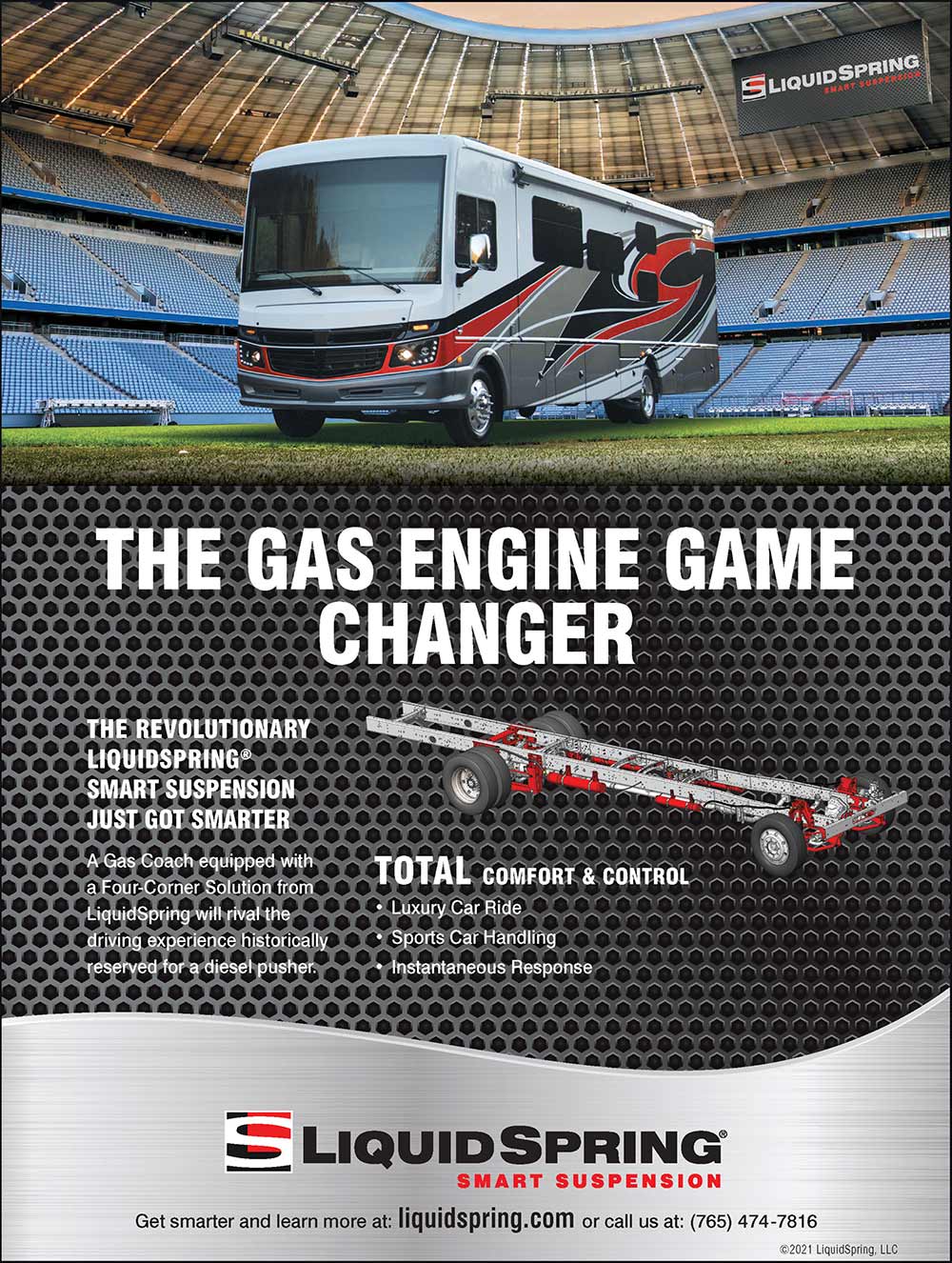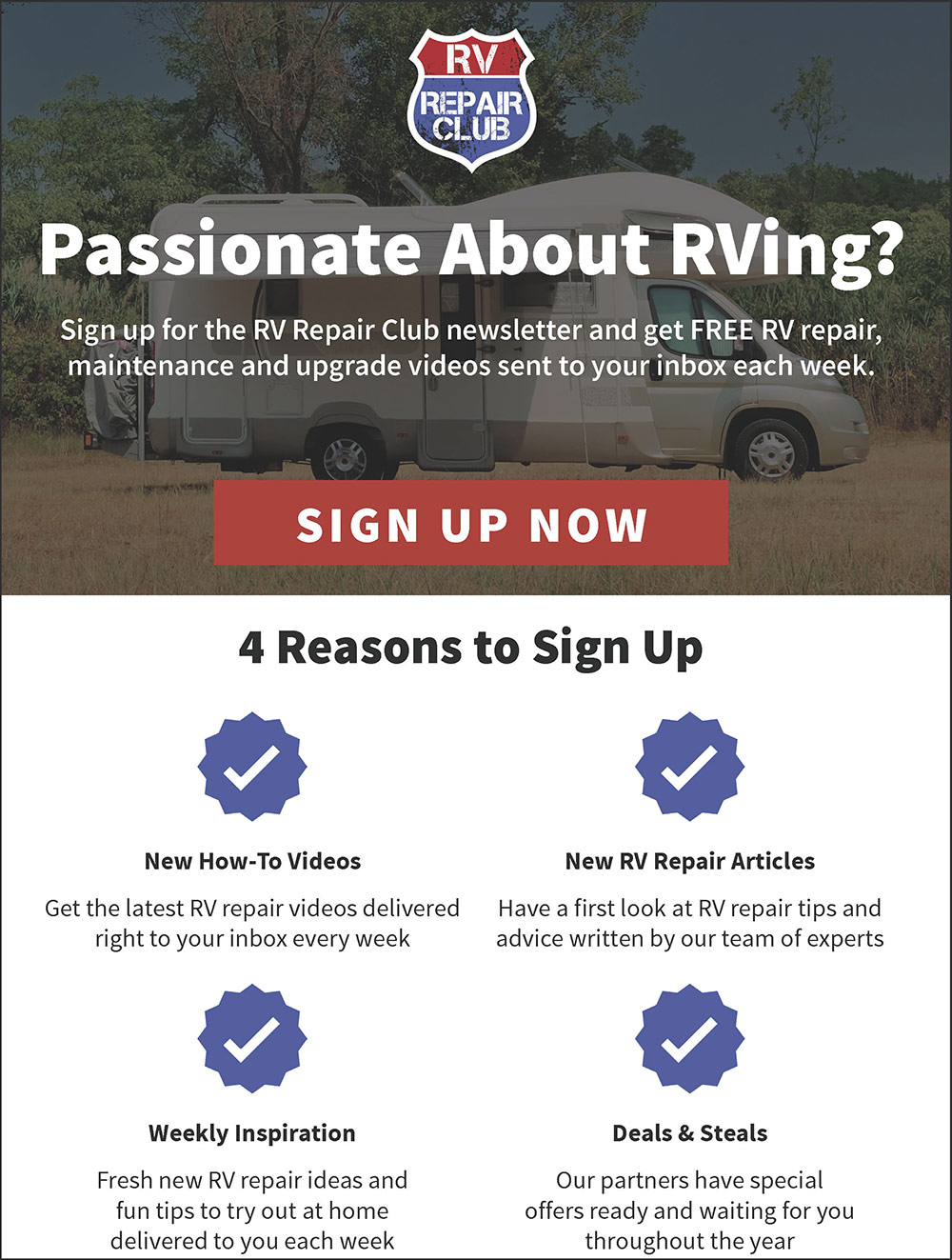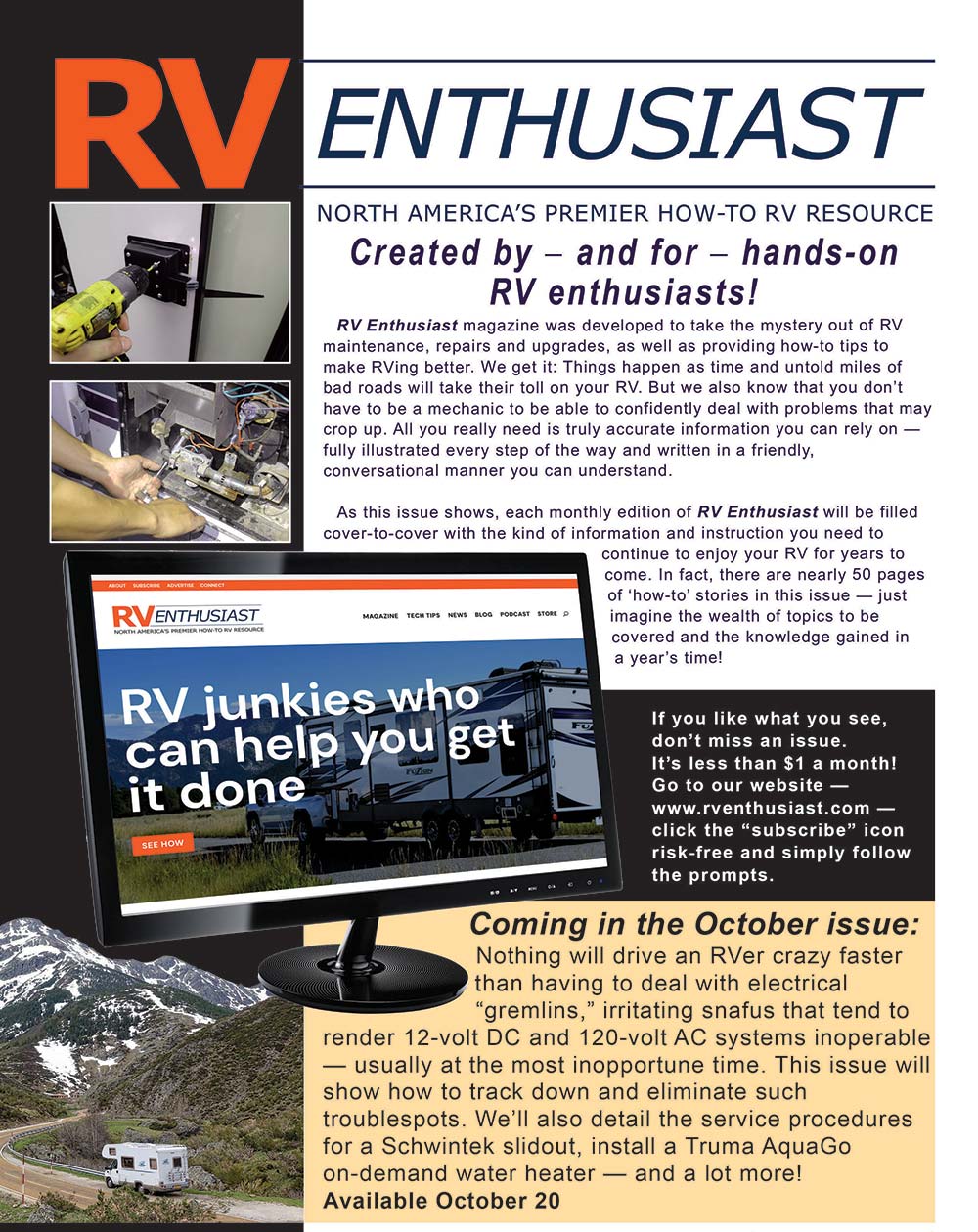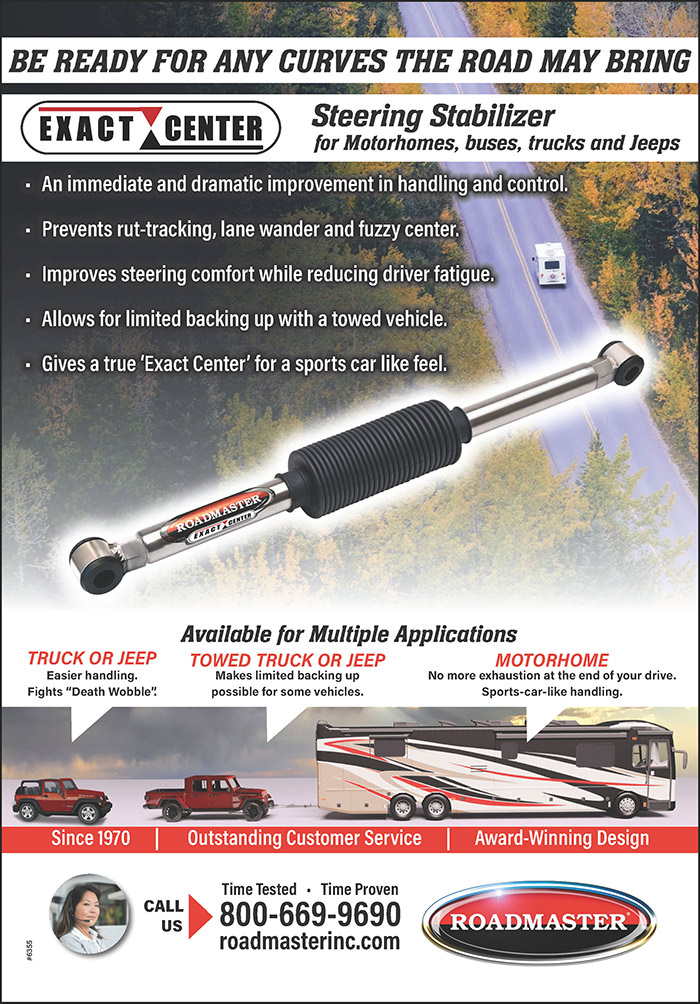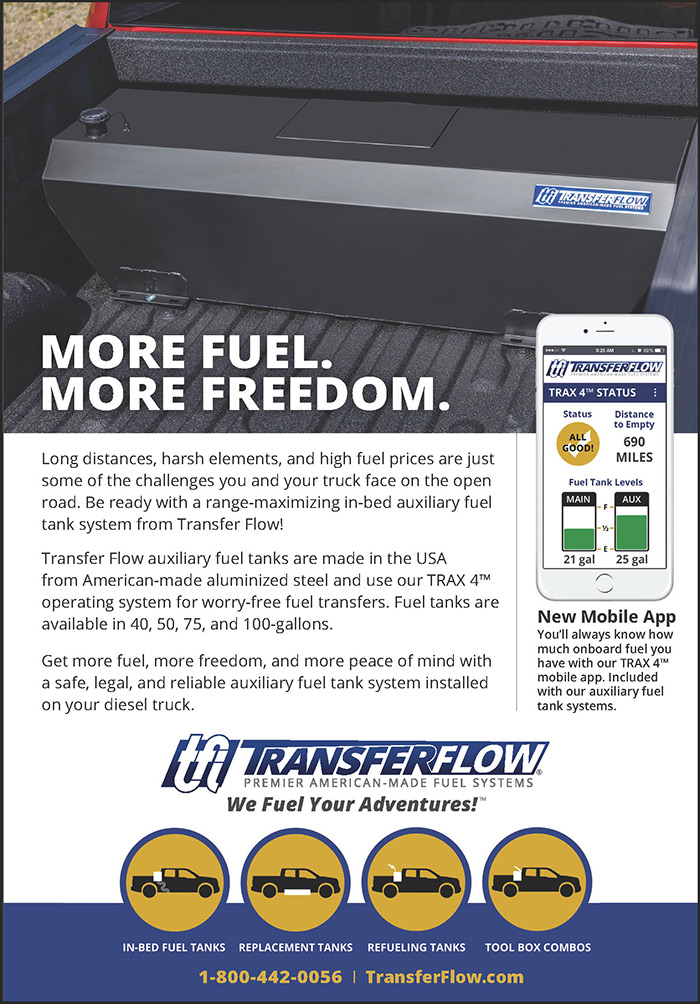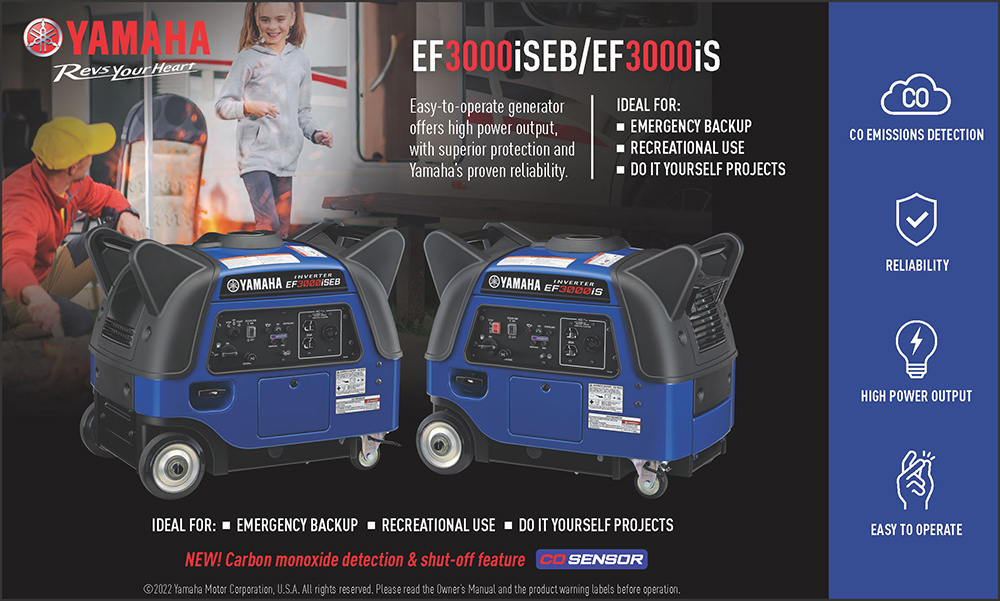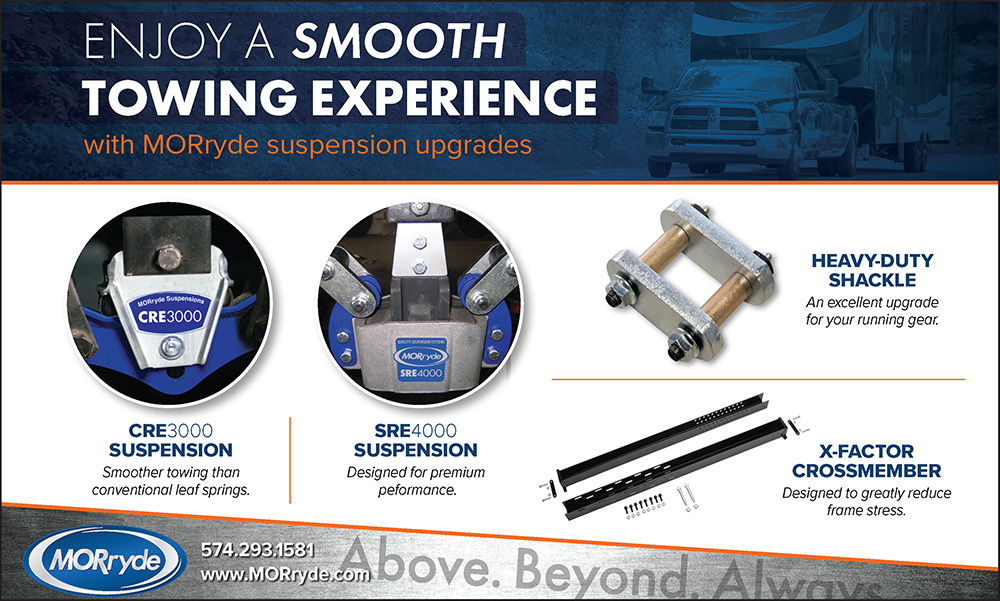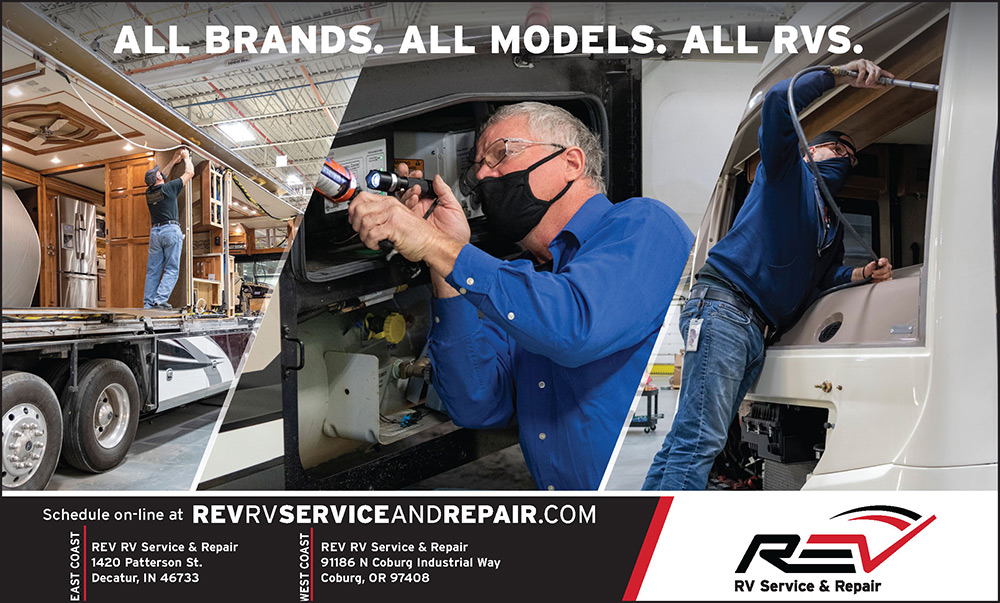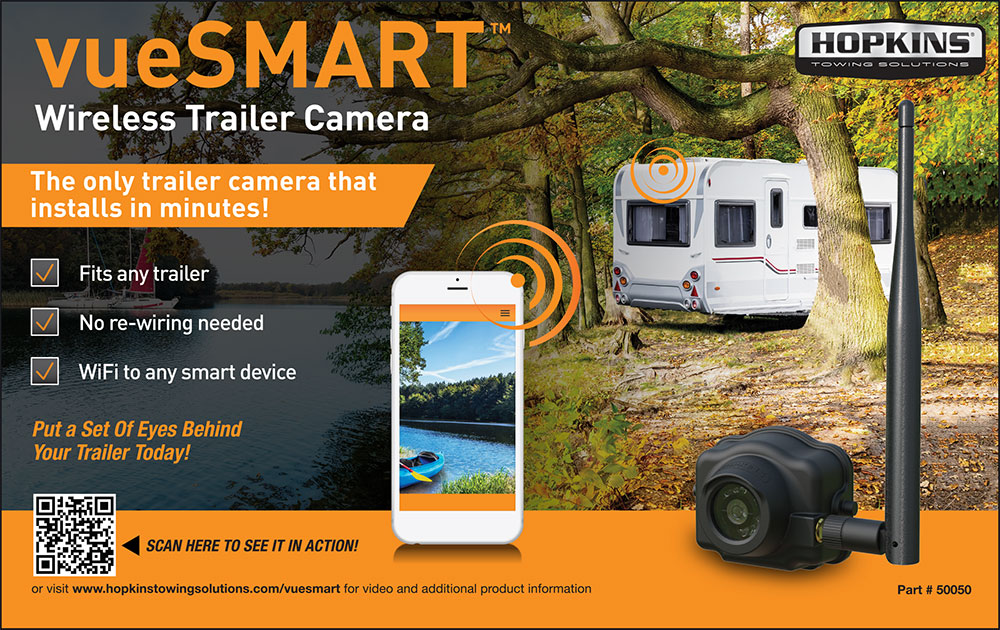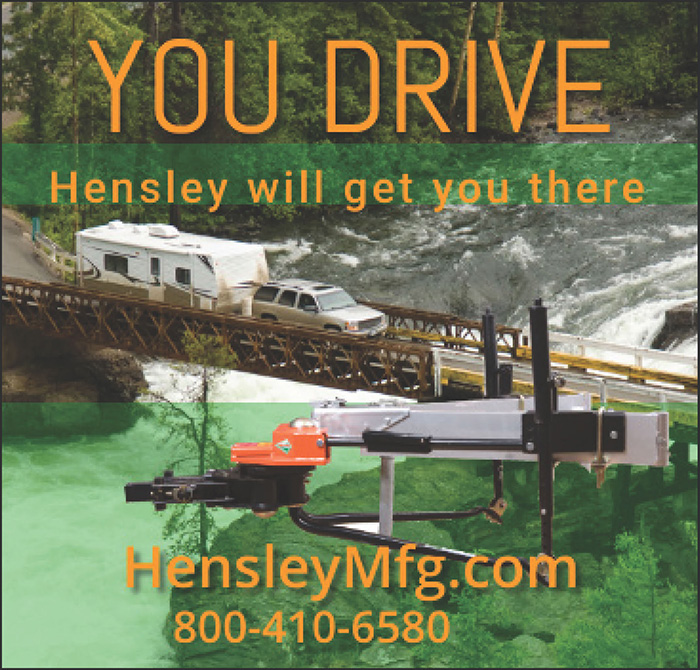Subscriber Access Only
Special Offer
Get 1 year of RV Enthusiast Magazine for just $9.99
Unlock My Offer No ThanksAlready a subscriber? Click here to access full issues.
VIBRATION BY 68%.
VIBRATION
BY 68%.
It’s time to enjoy your journey as much as your campsite.


Rather than use the “”old method” of a bleach mixture to neutralize bacteria and slime in RV freshwater systems, treating with EPA-approved Purogene — a solution that’s been around for 50 years — is easier to use, and it’s safe to drink.
Outdoor enthusiasts don’t just sit around the campfire while RVing — they like to explore their temporary environments. That, though, requires some form of ancillary transporation. Bicycles have long been favored — but now, eBikes extend their explorations.
Leaking water is the nemesis of an RV, be it a travel trailer, fifth wheel or motorhome — and that means inside as well as outside. Leaks can and will happen, so your best insurance is to equip and carry a plumbing system emergency kit.
One source for the infamous “death wobble” sometimes encountered by RVers is worn out front bearings of a tow vehicle. Eliminating that brief but memorable uncontrolled shaking can be as simple as replacing the truck’s sealed front bearings — which we did on this Ram 3500.

MORryde’s CRE3000 equalizer replacement and Heavy-Duty Shackle Upgrade Kit is one of the quickest retrofits available for enhancing ride quality for leaf-spring-equipped travel trailers and fifth wheels equipped with multiple axles.
Shock absorbers are de rigueur on automobiles — but are few and far between on travel trailers and fifth wheels. Installing shocks on a towable, though, is a proven “shortcut” to take the hoppity-hop out of trailer towing.
The Slipper Spring system is engineered to reduce bucking and bouncing by replacing the equalizer with a steel box structure that incorporates rollers and wear plates along with spring packs with open, curved ends on one side to ride on the roller assemblies.
LiquidSpring didn’t set about enhancing the typical leaf-spring suspension on gas Class A motorhomes — the company replaced the entire suspension. Its “smart solution” uses a computer-controlled compressible-liquid system to temper road oscillations.
Developed by SuperSprings International, this “airless air bag” system uses a proprietary blend of nitrogen “bubbles” injected into urethane to create products with a progressive spring rate — and they can be installed in as little as 30 minutes.
(805) 320-6909
[email protected]
EDITOR – Bruce Hampson
(574) 584-4616
[email protected]
TECHNICAL DIRECTOR
BILL GEHR
(805) 340-5015
[email protected]
ART DIRECTOR – MIKE ACCUARDI
[email protected]
26362 Douglas ave., Elkhart, in 46514
 AFFILIATE NOTICE: RVE Media Group LLC provides links to vendors and products, such as an Amazon Associates account, for informational purposes, but that may provide a commission if you purchase from that link. We often label these links with language that provides transparency if the destination is an advertiser, affiliate, or partner. Products are often provided to RVE at little/no cost for editorial testing purposes by vendors/suppliers. Under no circumstances does this affect the results of the test or install as published in RV Enthusiast. Sponsored content is identified as such directly on the content.
AFFILIATE NOTICE: RVE Media Group LLC provides links to vendors and products, such as an Amazon Associates account, for informational purposes, but that may provide a commission if you purchase from that link. We often label these links with language that provides transparency if the destination is an advertiser, affiliate, or partner. Products are often provided to RVE at little/no cost for editorial testing purposes by vendors/suppliers. Under no circumstances does this affect the results of the test or install as published in RV Enthusiast. Sponsored content is identified as such directly on the content.
PRIVACY POLICY: Our complete privacy policy can be found at https://rventhusiast.com/privacy-policy/
What Are Some of the ‘Necessities’ RVs are Lacking?
f there’s one thing I’ve learned during the past few years as social media has grown into a juggernaut, it’s not to believe everything you read online. In fact, much of it should be taken with the proverbial “grain of salt” — because things tend to be, well, exaggerated, by keyboard warriors. Without verification, a lot of the more dubious claims ought to be looked upon with the same disdain given those unending robo-calls telling you that your car’s warranty has expired.
When you read the same type of complaints from various sources, though, they tend to take on more significance — and there are a lot of complaints floating around in “the cloud” about RVs. Again, they need to be taken in context — they represent a miniscule percentage of the hundreds of thousands of RVs sold every year. But they are there. And they’re often accompanied by a question: Don’t the people who build these things (meaning the designers, engineers and executives responsible for what rolls down the assembly lines) actually use them?
News & Notes
Airstream Debuts RAM ProMaster-based Rangeline
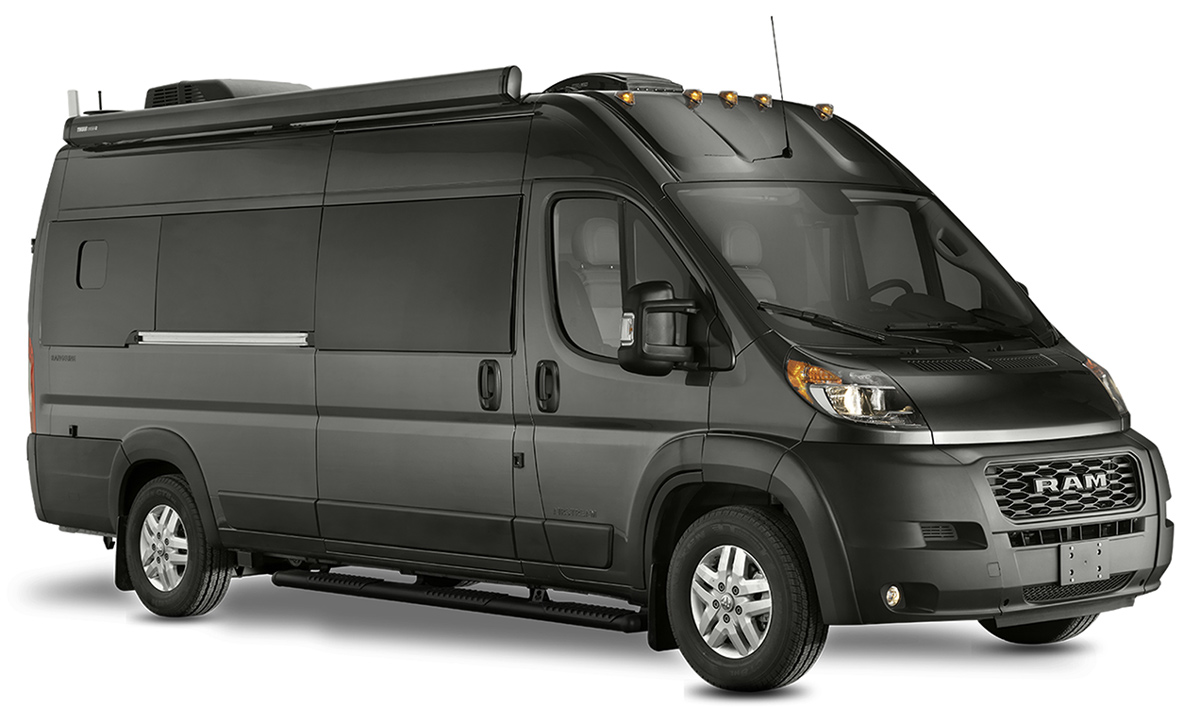
Airstream Inc., maker of the iconic “silver bullet” fleet of Airstream travel trailers and touring coaches, has introduced the all-new Rangeline Touring Coach — the 91-year-old company’s first motorized RV built on the RAM ProMaster 3500 chassis.
Powered by the 276-hp 3.6L Pentastar V6 engine and a TorqueFlite nine-speed automatic transmission, the front-wheel-drive Rangeline provides four belted positions (two captain’s chairs and a two-seat bench). The standard configuration of the European-inspired interior sleeps two on an elevated bed — with ample storage in a “garage” below — while the optional pop-top expands the sleeping capacity to four people.
In keeping with Airstream’s reputation for high-end craftsmanship, the $131,882 MSRP Rangeline carries a wealth of features and accessories. A 270Ah lithium battery bank and 2,000-watt inverter will help power its all-electric appliances (including a 3.2-cubic-foot refrigerator, .4-cubic-foot freezer and stowable electric stovetop), with supplemental power provided by a 2.8kW AC generator. The hydronic heating and hot water system for on-demand hot water and interior heat is powered by the gasoline in the vehicle’s fuel tank, while a Firefly multiplex control panel manages and monitors lighting and onboard systems.
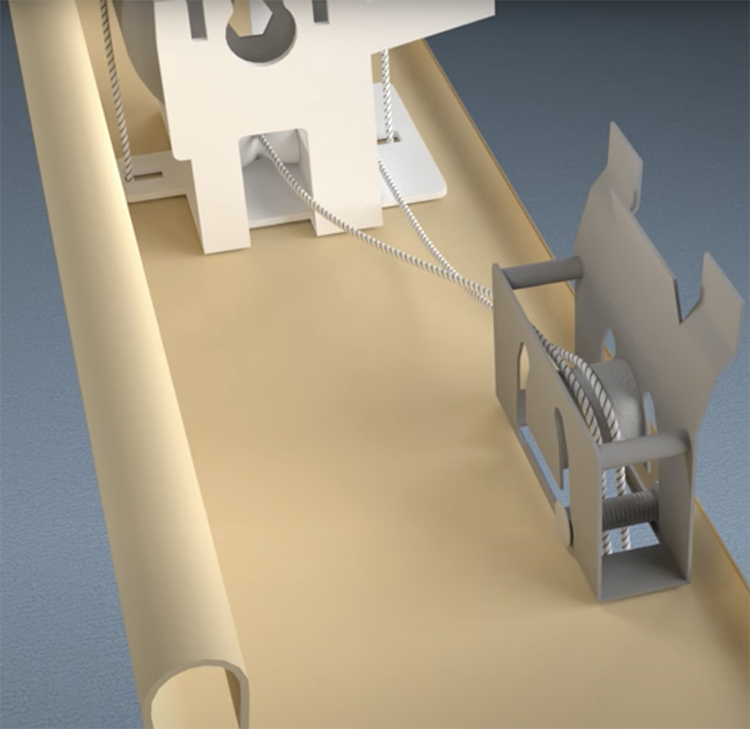
FixMyBlinds offers a number of how-to videos that explain the inner workings of blinds and how to repair them.
We own a 2002 Winnebago Adventurer motorhome and most of the day/night shades will not stay up any longer. Some of the strings are broken and even those blinds where the strings are still OK, the blind will not stay up. It looks rather complicated, but I’d like to try fixing the shades. Any suggestions on how to get started?
— Paul Ragland
Paul, glad to hear you want to try to fix the shades yourself. It’s not as difficult as you might think and after you do one of them the others will fall into place even easier. It actually might be more difficult to remove the valances to have access to the bracket that holds the shade in place. It’s not practical to give you step-by-step instructions in this column, but check out blinds.com and fixmyblinds.com where you’ll find very good basic videos that show you how to restring the shades. You’ll need to get the kit with the string and the restringing feeder; the sites will also have a guide on how to determine the diameter of the strings needed should you decide to order new shades in the future. Chances are you’ll be able to pick a color that’s close to the shades you have now if you want to go in that direction.
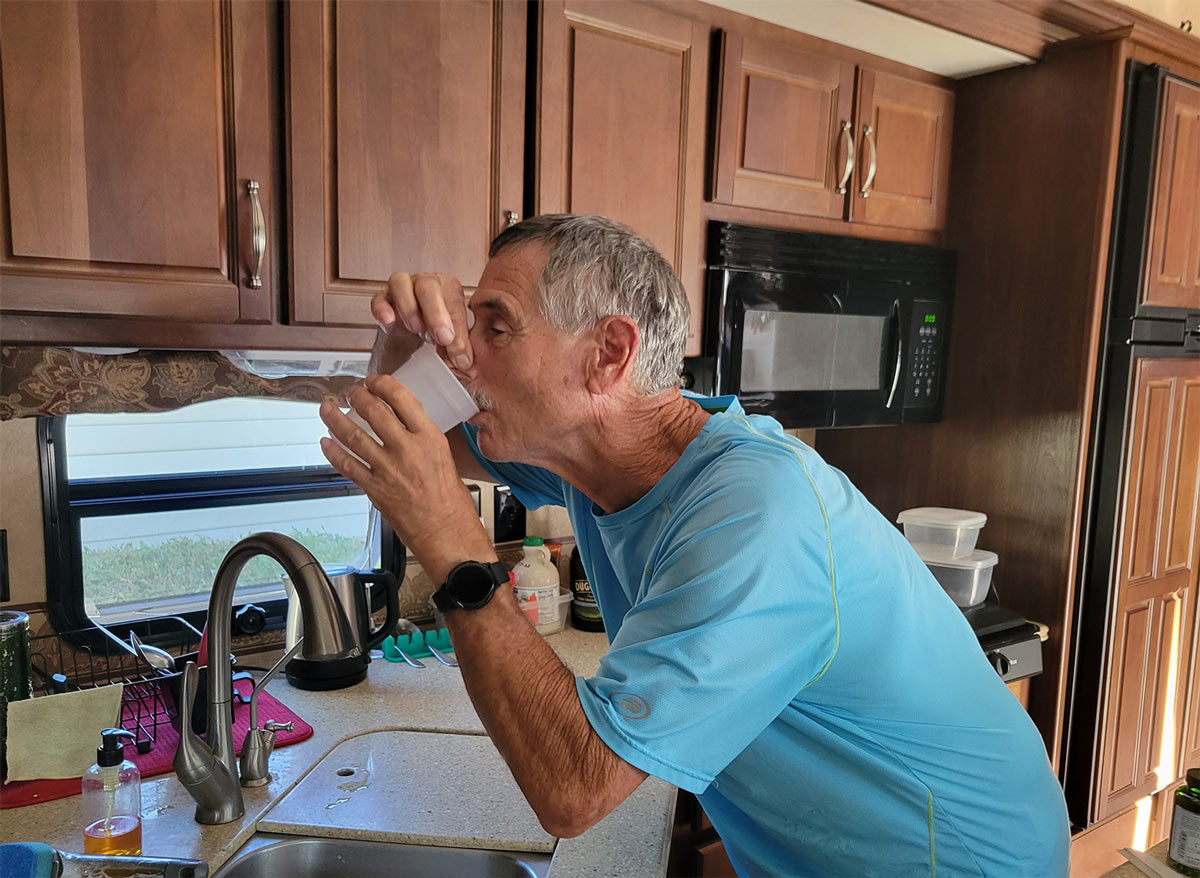
ater system maintenance is one of those obscure tasks that either RVers don’t know about or promise themselves to get done before the next outing — but by then it’s usually too late. All kinds of bacteria or other contaminants begin growing inside the tank, leading to smelly water and health hazards. Unless you’re a full-time RVer, the potable water and the integrated system of pipes and water heater in your RV could end up sitting full (or partially full) for months if the system wasn’t drained beforehand — which will undoubtedly lead to contamination. And even if you take care of the water system, there’s still the risk of contamination from questionable sources while on the road.
Fortunately, sanitizing your water system is not that difficult, requiring maybe an hour of your time. Classic procedures suggest the use of bleach and water to sanitize the tank and lines, but bleach is a poison and misuse can lead to even worse problems, including burning of your skin, damaging clothing and that awful lingering taste — even after thorough rinsing, which is mandatory. A better solution (pun intended) is to use Purogene, which has been around for more than 50 years and has the EPA’s blessing for use in drinking water. The liquid is 2% chlorine dioxide, which has no free chlorine and can successfully sanitize and deodorize RV water systems without the aforementioned negative issues related to using bleach.

icycling is one of those recreational activities many of us have enjoyed since early childhood. Pedaling along on two wheels provides an inexpensive mode of transportation and a great form of low-impact aerobic exercise that contributes to a healthy lifestyle. That’s why bicycles are a common sight being carried on RVs and ridden around areas frequented by RV enthusiasts.
Another mode of pedal power that’s becoming increasingly popular among RVers, however, are electric (battery-powered) bicycles — commonly known as eBikes — because sometimes you just want to enjoy the trip. eBikes still can provide all the requisite exercise you want, while extending your range dramatically. Search the Internet, though, and it’ll be quickly apparent eBikes seemingly come in as wide a range of brands, models and prices as tow vehicles, trailers and motorized RVs.
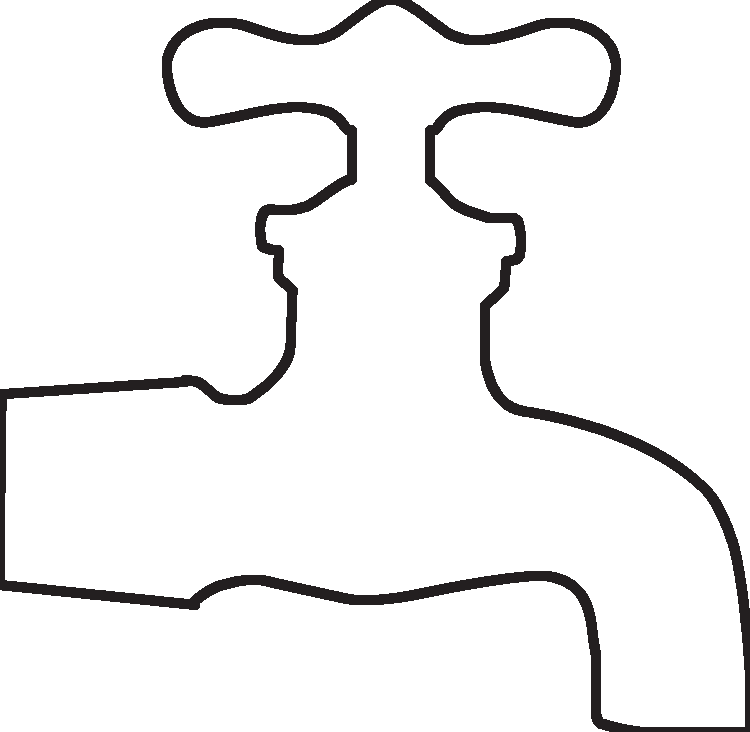
lumbing failures rarely happen when the RV is in storage — or any opportune time, for that matter. Instead, they rear their ugly heads most often while RVers are in a park enjoying a vacation. More than one vacation has been terminated prematurely due to plumbing problems.
It seems like freshwater lines and fittings have always been the most susceptible to failure, because they are typically exposed under the galley or bathroom sink in compartments where they get beaten up by supplies that are stored nearby — and, of course, they get abused from vibrations and bouncing while on the road. Typically, fittings fail, but water lines have also been known to spring leaks. Sometimes a water line or fitting inside the wall or under the RV can become compromised, which makes the repair even more difficult. In just about all cases, leaks that are allowed to persist will lead to dry-rot damage.

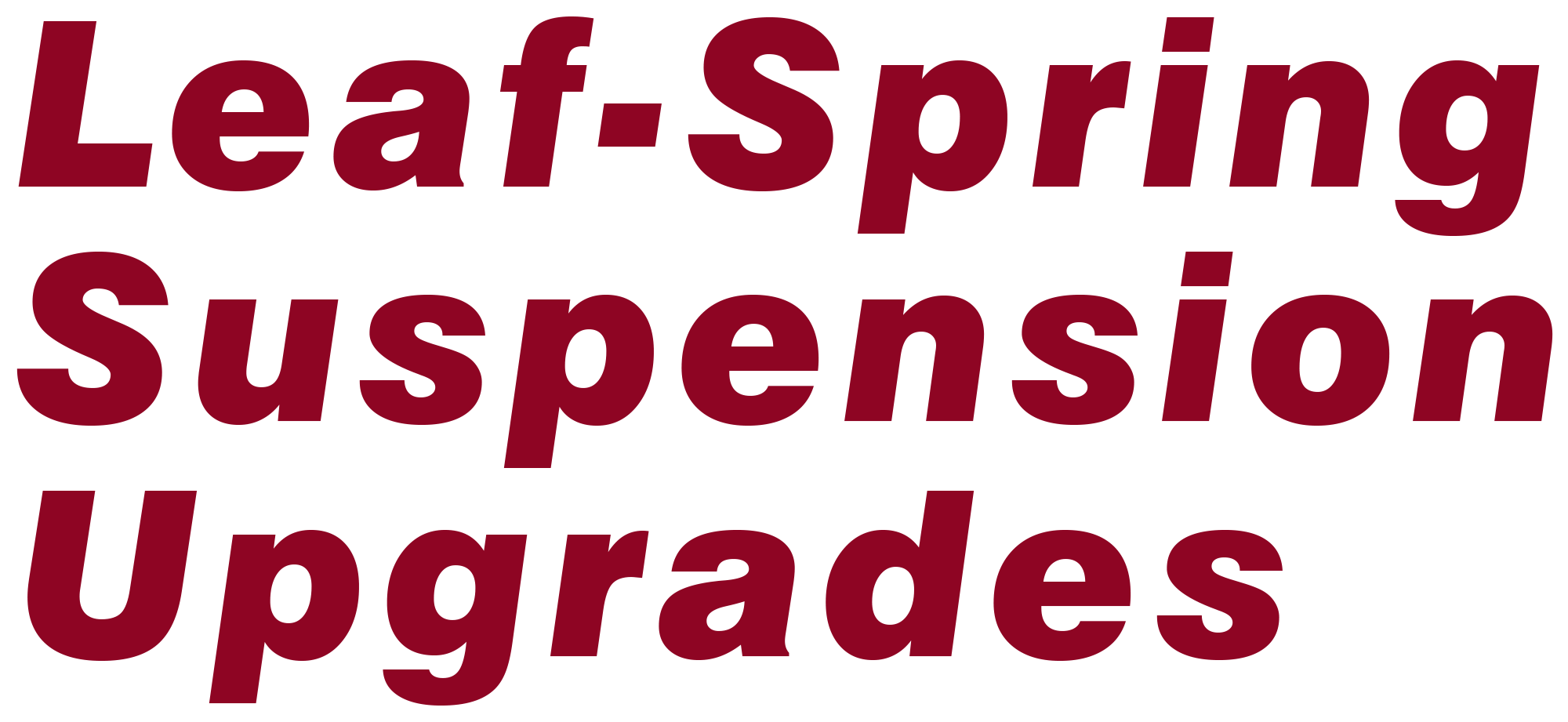
wning an RV can be overwhelming at times. Aside from the necessary upkeep of a mobile home on wheels and the frustration of not always being able to camp where you want/when you want due to the popularity of certain locations, simply moving the new-to-you rig can be alarming. Let’s face it: Until retrieving the “fun funds” from a bank account and driving away with an oversize motorhome or towing a travel trailer of fifth wheel, most RVers have never piloted anything bigger and heavier than a pickup truck or a full-size SUV.
Not surprisingly, the thought of now being responsible for negotiating suspect roads and off-camber curves behind the wheel of a package that might weigh upwards of 10 tons or more and stretch out for, in many cases, 60 or more feet is a bit mind-boggling, to say the least. And it certainly doesn’t help matters when the RV handles or rides like a buckboard.

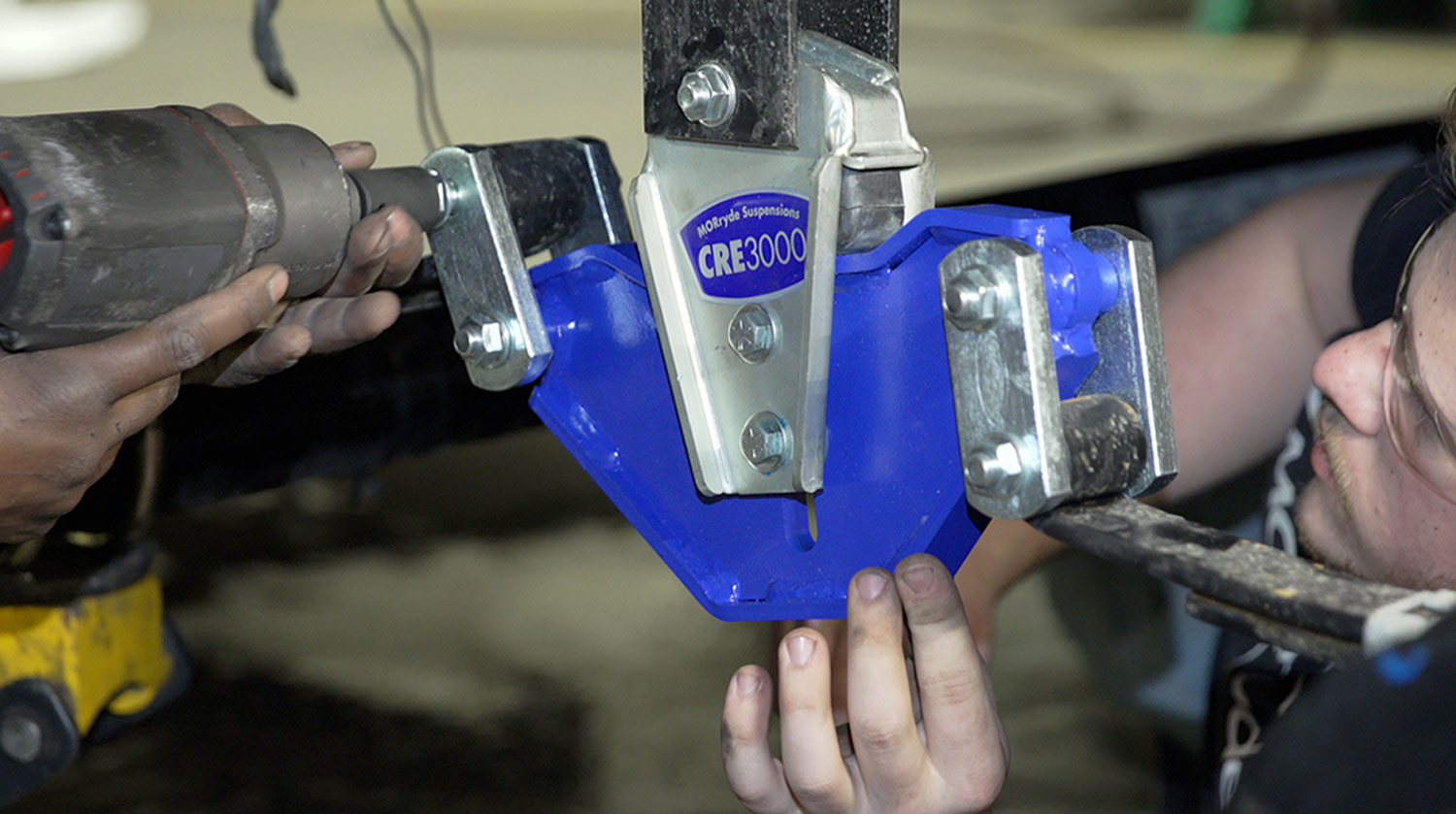
t’s no secret that the RV industry is growing by leaps and bounds — but we’re not necessarily speaking about its escalating popularity. The vehicles themselves — from travel trailers to diesel pusher motorhomes — have also dramatically expanded both in size and weight. Motivated by campers wanting, quite literally, an RV equipped with every residential feature they’ve come to appreciate, manufacturers are only too happy to oblige.
All that weight, however, has its drawbacks, not the least of which is usually the need for investing in a bigger and stronger tow vehicle. The venerable leaf-spring suspension — the default suspension of choice by towable manufacturers due to its simplicity and cost — does an adequate job, but all you’d need to do is ride in the trailer or fifth wheel while it’s being towed (definitely not recommended, even in states where it’s allowed) to understand the stresses created in the RV by irregular road surfaces. Most RV components and appliances don’t fail due to use, they break due to the continual jarring.

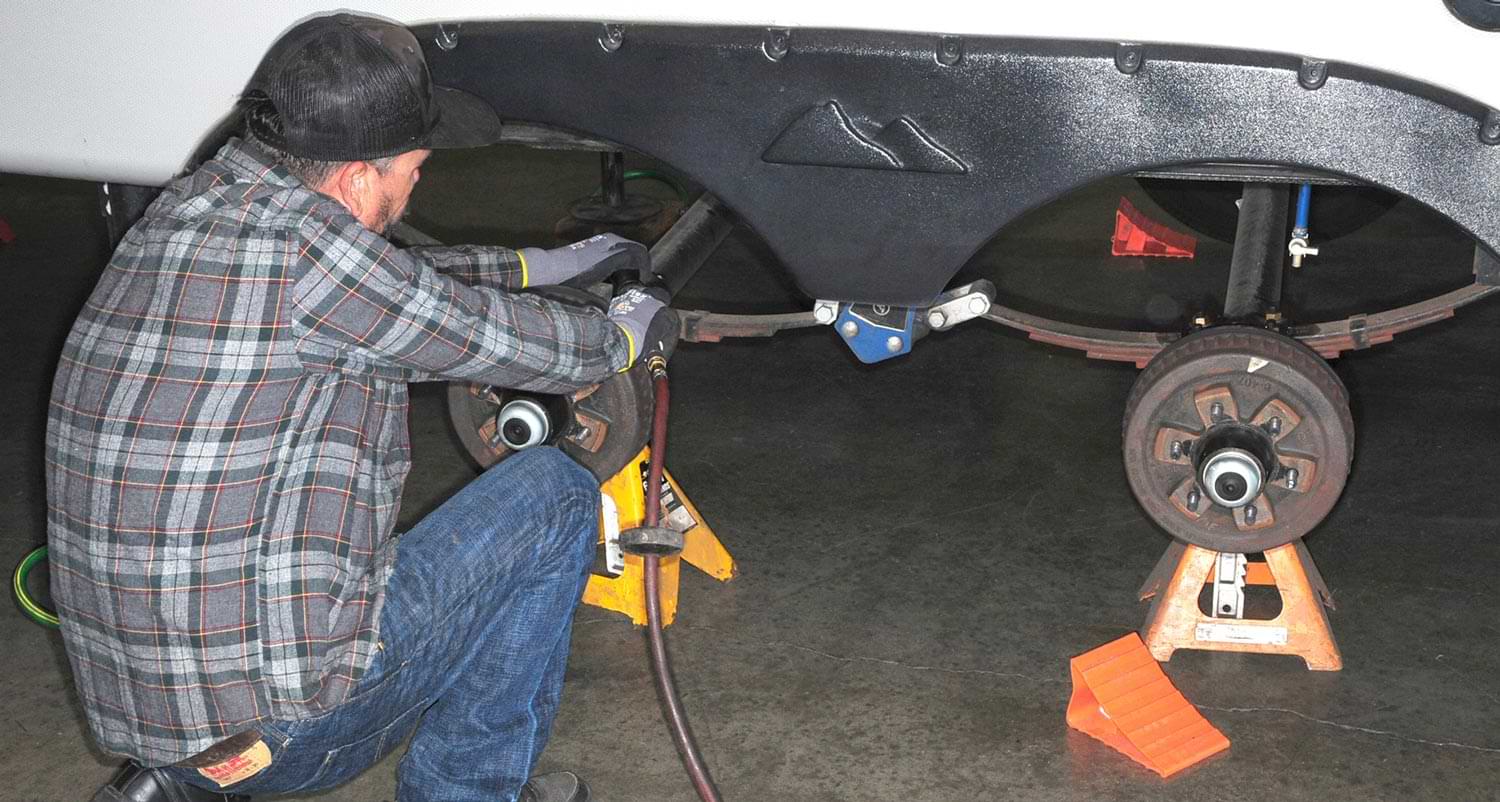
here’s nothing very exotic about a basic suspension under a trailer or fifth wheel. As a matter of fact, it still carries some similarity to the suspensions used on covered wagons and stagecoaches of a century or more ago: leaf springs hooked to axles and connected by an equalizer. Why? Because it’s simple, effective and works — at least, to a certain extent. But while these Spartan suspensions still offer some relief from less-than-perfect roadways, there’s really not much cushioning and bounce control going on.
On the other hand, shock absorbers — the most common device to damp unwanted impulses created by interaction of the vehicle body and springs — have been around for nearly as long as automobiles, but they are not commonly found on trailers and fifth wheels as standard equipment, especially on entry-level units. One reason for the omission is the belief that since people don’t ride in them while on the road, they have no idea how harsh the ride is and how abusive all that jostling and flexing can be on the structure and contents. That, however, completely ignores the fact that constant pounding on the road can lead to premature damage and costly repairs to installed components and the RV itself.

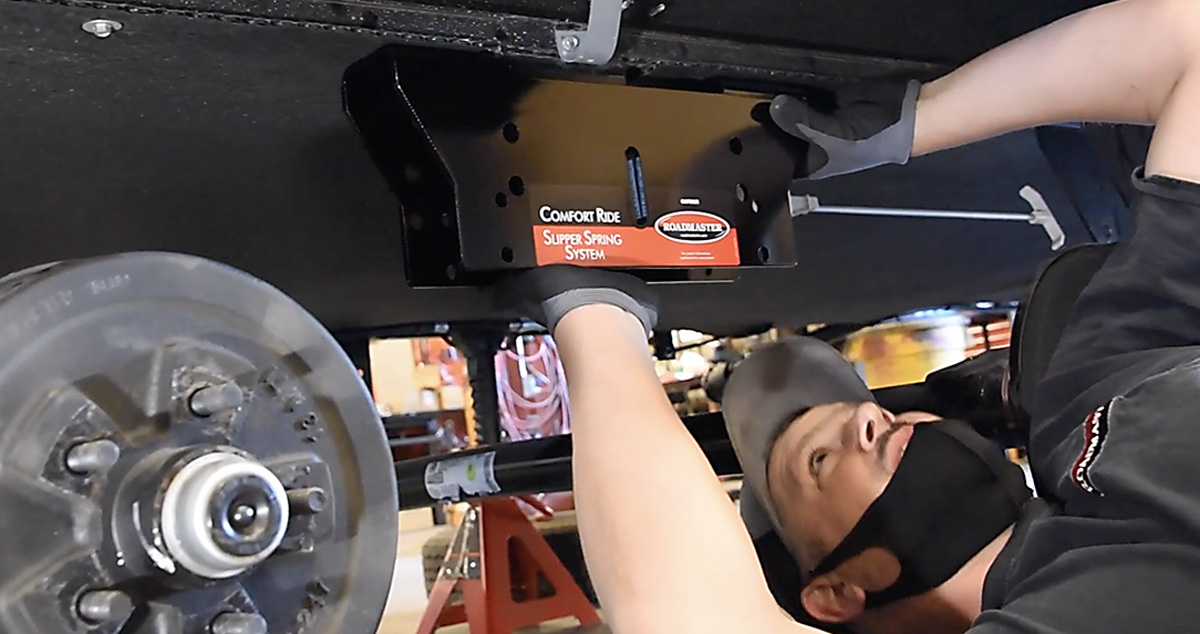
oadmaster Inc. of Vancouver, Wash., is well-known for its dinghy towing products — which range from baseplates and tow bars to auxiliary braking systems and more — but the company is fast making a name for itself in the suspension aftermarket for parts such as its Comfort Ride slipper spring and shock absorber kits (available together or separately) for tandem-axle and triple-axle trailers.
The slipper spring kit is engineered to reduce bucking and bouncing by replacing the leaf spring equalizer (as well as the leaf springs themselves) with a steel box structure that bolts to the equalizer bracket and to the trailer’s frame. The spring box incorporates rollers and wear plates, which are designed to accommodate the specially designed leaf springs.

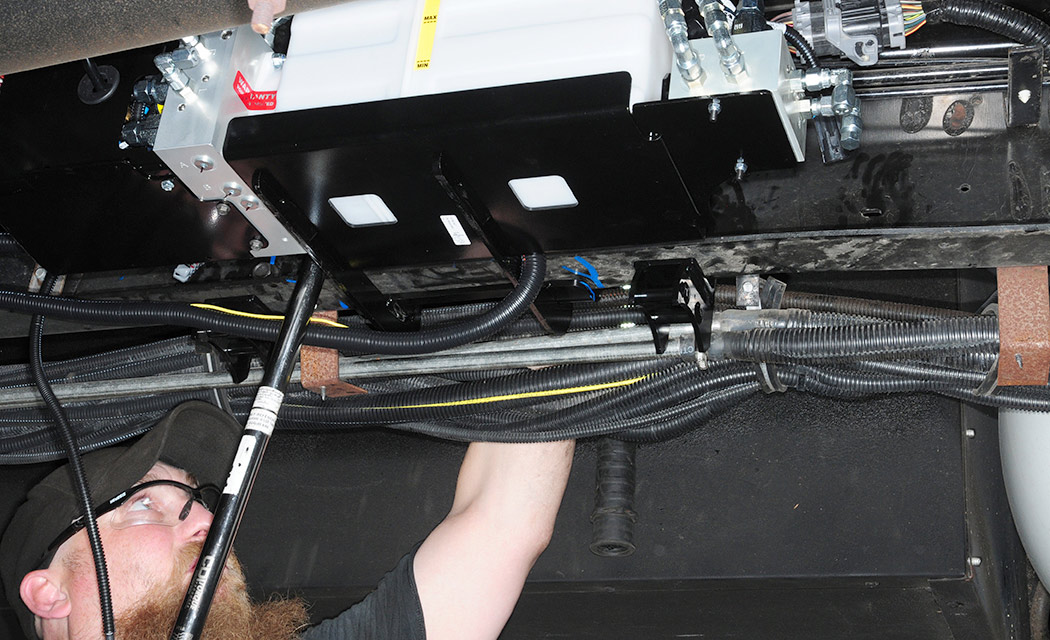
f you’ve been paying attention, you’ve noticed that virtually all the suspension enhancements covered in this “Suspended Animation” section have dealt with improving handling and driving comfort derived from leaf-spring underpinnings. Well, they aren’t used exclusively for travel trailers and fifth wheels. For decades, a wide variety of add-on devices have been marketed to improve the ride and road manners of the leaf-spring suspension for the Ford F-53 motorhome chassis, the mainstay of the Class A gasoline-powered motorized industry.
But while many of the add-ons developed by various companies in the aftermarket have tempered the Ford’s road manners to a certain extent, the Ford chassis continues to be known for its stiff ride and, at times, less-than-stellar handling. That’s why Lafayette, Indiana-based LiquidSpring opted to go in another direction. Rather than attempt to “fix” the Ford’s shortcomings by bolting parts to the otherwise stock suspension, LiquidSpring designed a computer-controlled compressible-liquid “smart” suspension system that is installed in place of the Ford chassis’ steel leaf springs and shock absorbers. The system is available for F-53 chassis with 16,000- through 26,000-pound gross vehicle weight ratings (GVWR), dating back to 2011. (Applications for other vehicles also are available.)

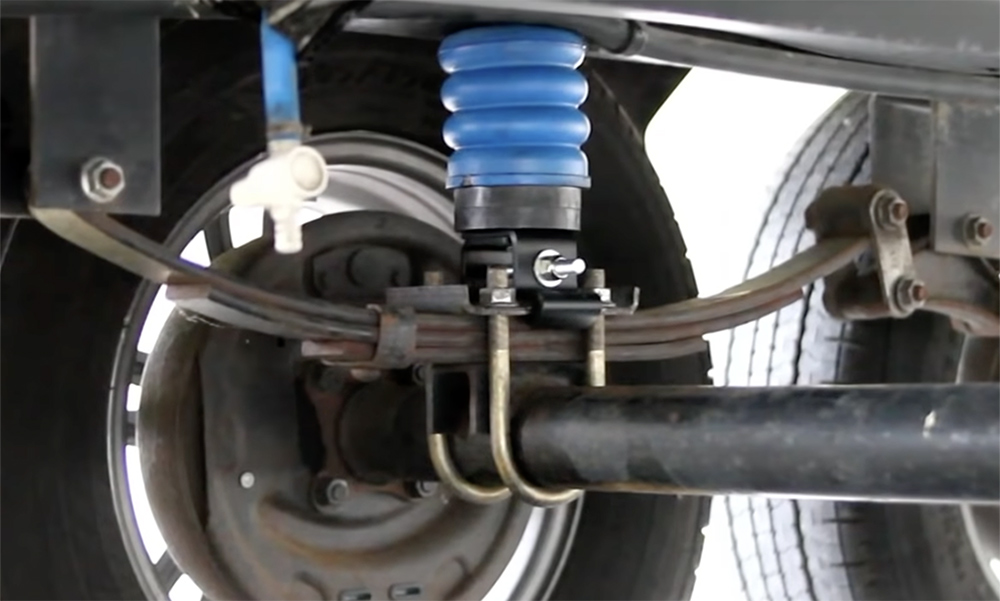
ompanies have for years been developing aftermarket systems to further enhance the ability of, well, “adequate” leaf-spring suspensions to reduce the impact of road hazards on trailers. One of the simplest of these — from an installation standpoint — is SumoSprings, an “airless air bag” system developed by SuperSprings International.
It’s also one of the most technologically advanced products on the market. By using a closed-cell urethane — injecting nitrogen bubbles into the urethane — its proprietary design allows for the adjustment of the diameter and density of the air bubbles, effectively allowing the company to create products capable of different support capacities. It also features a parabolic spring curve, a fancy term for describing a progressive spring rate: as the suspension travels and there’s more movement, the SumoSpring gets stronger. It essentially functions much like an airbag system without requiring a compressor and can’t leak, making it zero-maintenance. SumoSprings are available in two densities for towable applications: “Blue” SumoSprings are designed for trailers with gross axle weight ratings (GAWR) of 3,000 to 5,000 pounds, while “Black” springs are for GAWRs of 5,000 to 8,000 pounds (superspringsinternational.com/trailer-sumosprings/). Kits, which retail for about $250-$300 per axle, are available for over-axle and under-axle leaf-spring configurations and can be installed in about 30 minutes. Kits also are available for a number of motorhomes and tow vehicles.

ou’re driving down the highway, happily towing your trailer when you hit a pothole, which is not unusual these days. All of a sudden, the truck starts to shake, the steering wheel tries to jump out of your hands and you think, “Is this the end?” Fortunately, the uncontrolled movement of the front suspension subsides as you slow down or stop — but the memory of the “death wobble” will be planted firmly in your brain.
“Death wobble” sounds so ominous, but it’s the term truck owners have coined over the years to describe the sensation when the front end of the truck shakes violently and control is compromised. It’s a situation that strikes trucks and SUVs, especially those with solid front axles. The Dodge Ram seems to get the brunt of the Internet exposure for the death wobble, but it’s been a problem for just about all trucks. I remember experiencing the violent shaking in my Ford pickup back in the early 1980s — and that was with a Twin-I-Beam suspension.



